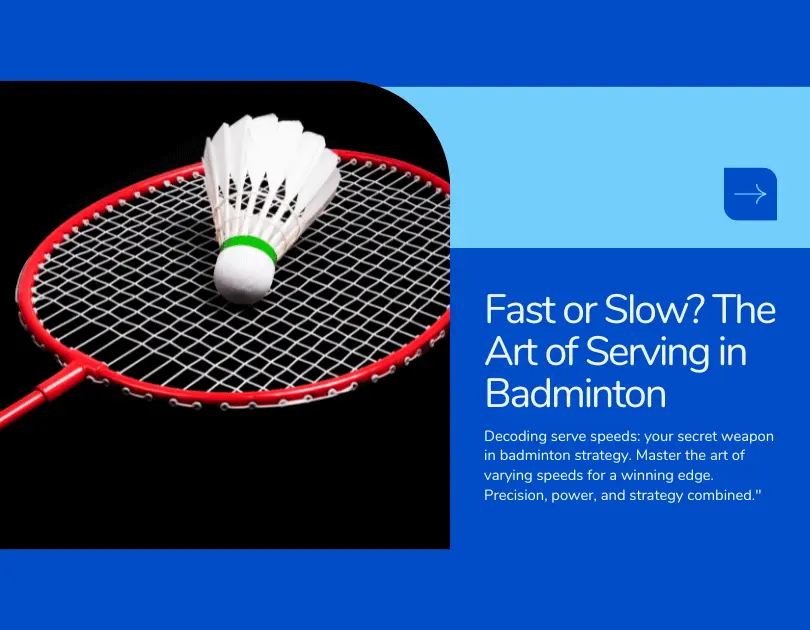In the heart of every badminton match, amid swift movements and strategic placements, lies a factor often overlooked: the speed of the serve. Mastering the art of decoding serve speeds grants players a significant advantage, enabling them to anticipate, react, and counter with precision. In this comprehensive guide, we unravel the secrets behind serve speeds, unlocking a crucial dimension of badminton gameplay that can tip the scales in your favor.
Significance of Serve Speeds: The Hidden Weapon Revealed
Serve speeds are not mere statistics; they are vital indicators of a player’s power, strategy, and control. Understanding their significance is the first step toward gaining an edge on the court.
Influence on Opponent Reactions:
The speed at which a shuttlecock hurtles across the net directly affects how opponents respond. A fast serve limits reaction time, pressuring opponents into hasty decisions and potential errors.
Creating Pressure with Speed Variations:
Varying serve speeds strategically keep opponents guessing. Alternating between rapid and moderate serves introduces an element of unpredictability, unsettling opponents and disrupting their rhythm.
Measuring and Improving Serve Speed: Unleashing Your Full Potential:
Serve speed is not just a natural talent; it can be enhanced through focused training and technique refinement. Understanding how to measure and improve your serve speed is a vital aspect of badminton mastery.
Utilizing Speed Guns and Technology:
Modern technology, including speed guns, offers precise measurements of serve speeds. Utilizing these tools helps players monitor progress and identify areas for improvement.
Strengthening Arm and Wrist Muscles:
Serve speed originates from the explosive power in arm and wrist movements. Targeted strength training exercises enhance these muscle groups, translating to faster and more impactful serves.
Perfecting Timing for Explosive Serves:
Timing is the essence of powerful serves. Perfecting the synchronization between racket movement and shuttlecock contact maximizes the energy transfer, resulting in blistering serves.
Strategies for Match Advantage: Tactical Mastery in Serve Speeds
Serve speeds, when wielded strategically, can disrupt opponents’ strategies and open avenues for attack. Employing specific strategies during matches provides a tactical advantage.
Surprise Element with Quick Serves:
Introducing sudden bursts of speed catches opponents off guard. Quick serves, especially at unexpected moments, can create openings for immediate attacks, leaving opponents scrambling to respond.
Strategic Timing of Power Serves:
Timing power serves to amplify their impact strategically. Executing them at critical points, such as during opponents’ fatigue or at key scoring junctures, maximizes their psychological effect.
Mixing Speeds for Unpredictability:
Consistent variation in serve speeds befuddles opponents. By seamlessly alternating between fast, moderate, and slow serves, players create an air of unpredictability, making it challenging for opponents to settle into a rhythm. For an in-depth analysis of playing patterns and game strategy in badminton, refer to this scholarly article on The Playing Pattern of the World’s Top Single Badminton Players.
In the dynamic world of badminton, mastering serve speeds is akin to controlling the tempo of a musical composition. It requires finesse, timing, and strategy. By decoding the nuances of serve speeds, players can gain a formidable advantage, turning each serve into a potent weapon and setting the stage for victory. Stay tuned as we continue to explore the intricate strategies and techniques that make badminton a thrilling and strategic sport.


8 thoughts on “Decoding Serve Speeds: The Crucial Badminton Advantage”